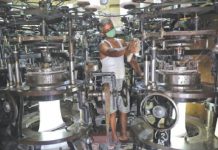
When PM Modi lauded India’s performance at the Asian Games tweeting, “A momentous achievement for India at the Asian Games! The people of India are thrilled that we have reached a remarkable milestone of 107 medals”, the whole nation was rejoicing. A report by Sunny Sharma
Breaching the 100-medal barrier at the Asian Games is a landmark moment for Indian sports and in no way a mean feat. The haul of 107 medals surpasses by a huge margin the previous highest tally of 70 at Jakarta five years ago. The 107 medals that India clinched include 28 gold, 38 silver and 41 bronze.
While a lion’s share of the gold medals came from the three disciplines of track and field (six), shooting (seven) and archery (five), India earning podium finishes across 22 different sports points to the nation’s increasing diversification of excellence. The rowers, squash players, kabaddi stars and the men’s hockey team impressed; there was a first-ever gold medal in equestrian; new heroes were found in roller-skating and wind-surfing. Cricket, which is nothing short of a religion in India, brought two gold medals. Additional perspective can be gleaned from the fact that of the 28 golds, only 12 have come in events that are part of the Olympics roster. Even here, just a handful of marks, like Neeraj’s 88.88m throw, are world-beating. This shows that while Indian sport has come a long way, a lot more needs to be done to bridge the gap with global standards.
It is a watershed moment in its sporting history and the momentous achievement has understandably sent the country into a state of euphoria. Finishing fourth overall, it is India’s best performance in 60 years. The previous highest ranking was in 1962, when India finished third. The significance of the march to a century is not limited to numbers. The preparedness of the athletes, their confidence and the self-assuredness on display augur well for India’s sporting ambitions. The players, the coaches, the support staff and the authorities deserve all the credit.
Two years ago, India had registered its best-ever haul at the Olympics, winning seven medals in Tokyo. The signs of change are hard to miss. The results of increased funding, focused training and exposure trips abroad are showing. It’s a welcome break from the perpetual complaints of lack of infrastructure and support. The Central and state governments have done well to back the athletes and invest in sporting infrastructure. But it is essential to build on the momentum. The level of competitiveness on the global stage does not allow any room for complacency.
One interesting feature of the Asian Games 2023 in Hangzhou, China, is that athletes from Haryana continue to demonstrate their exceptional talent and prowess. Of the total 84 medals clinched by India at the games so far, an impressive 21 belong to athletes hailing from the state. Haryana has so far secured seven gold, three silver and 11 bronze medals for the nation. Indian javelin great, Neeraj Chopra clinched the gold by achieving the season’s best throw at 88.88m. A son of the soil, Neeraj hails from the Panipat district of the state.
Besides, Haryana’s shooters have also hit the bulls-eye exceptionally well, by bagging several medals. Faridabad’s Shiva Narwal and Ambala’s Sarabjot Singh jointly won the gold in the 10m air pistol team event. Sarabjot also won the silver in the mixed event. Rhythm Sangwan of Faridabad and Manu Bhakar of Jhajjar won the gold in the 25m pistol event, and Palak, also from Jhajjar, clinched the gold in the individual category and the silver in the team event in the 10m air pistol. Ramita of Kurukshetra won the silver in the team and the bronze in the individual category of the same event.
Teammates – Adarsh Singh of Faridabad, and Anish Bhanwala from Karnal – clinched the bronze in the 25m rapid fire pistol team event. Rohtak’s Shafali Verma was part of the Indian women’s cricket team that clinched the gold at the Asian Games. The rink also saw boxers from Haryana deliver impressive performances, with Preeti Panwar of Rohtak securing the bronze in the 54kg category, and Parveen Hooda from Rohtak, winning the bronze in the 57kg category. Narendra Berwal of Hisar bagged the bronze in the 92-plus-kg weight category. Wrestler Sunil Kumar of Sonipat also secured the bronze in the 87kg category. Parminder Singh of Shahpur village in Yamunanagar won the bronze in rowing quadruple sculls. Aryan Pal Singh Ghuman of Panchkula raced to victory with the bronze.
One of the most tangible indicators of this meticulous planning can be seen in the budgetary allocation for the Union Ministry of Youth Affairs and Sports, which has nearly doubled from 2014-15 to 2023-24, reaching approximately Rs 3,400 crores. Over two-thirds of this budget allocation is designated for the Department of Sports. This allocation reflects the government’s commitment to establishing a world-class talent identification infrastructure.
A noteworthy initiative in this regard is the Khelo India Scheme, which has received substantial financial backing. The scheme has played a pivotal role in providing opportunities to approximately 23 lakh school children, identifying potential talent that can be nurtured and developed further. It acknowledges the fact that talent is often evenly distributed, but opportunities are not. The current sports policy approach is empowering and democratising the opportunities for young individuals to engage in sports. For instance, the establishment of over 1,000 Khelo India Centers in districts aims to bolster grassroots-level sports infrastructure. Simultaneously, it offers a source of income for local sporting talent by involving them as sports coaches.
A 650-strong contingent for the Asian Games has sent an encouraging message that every athlete, playing whichever sport, is valued. The decision has been validated by the record number of women podium finishers and medals in disciplines in which India has had little or no presence.
India has the talent, but the challenge is to tap it. Nurturing a sporting culture requires sustained investment. Let’s not lose the opportunity. The Union government, Sports Authority of India and various State governments need to come up with a plethora of initiatives to help athletes. The experts point out need to weed out inefficient administrators, factionalism in federations, endless court battles and the giant doping cloud that hangs around.












